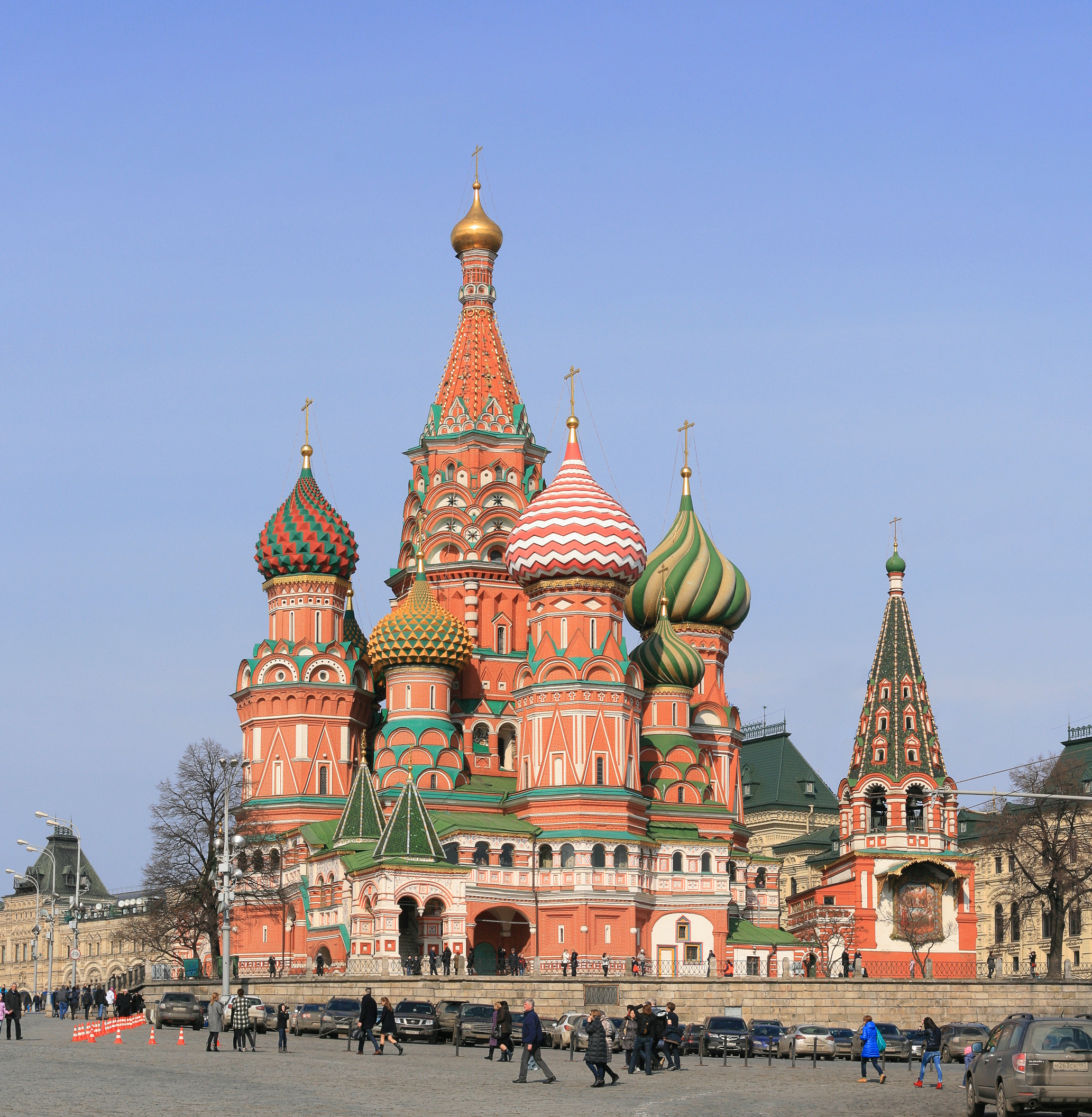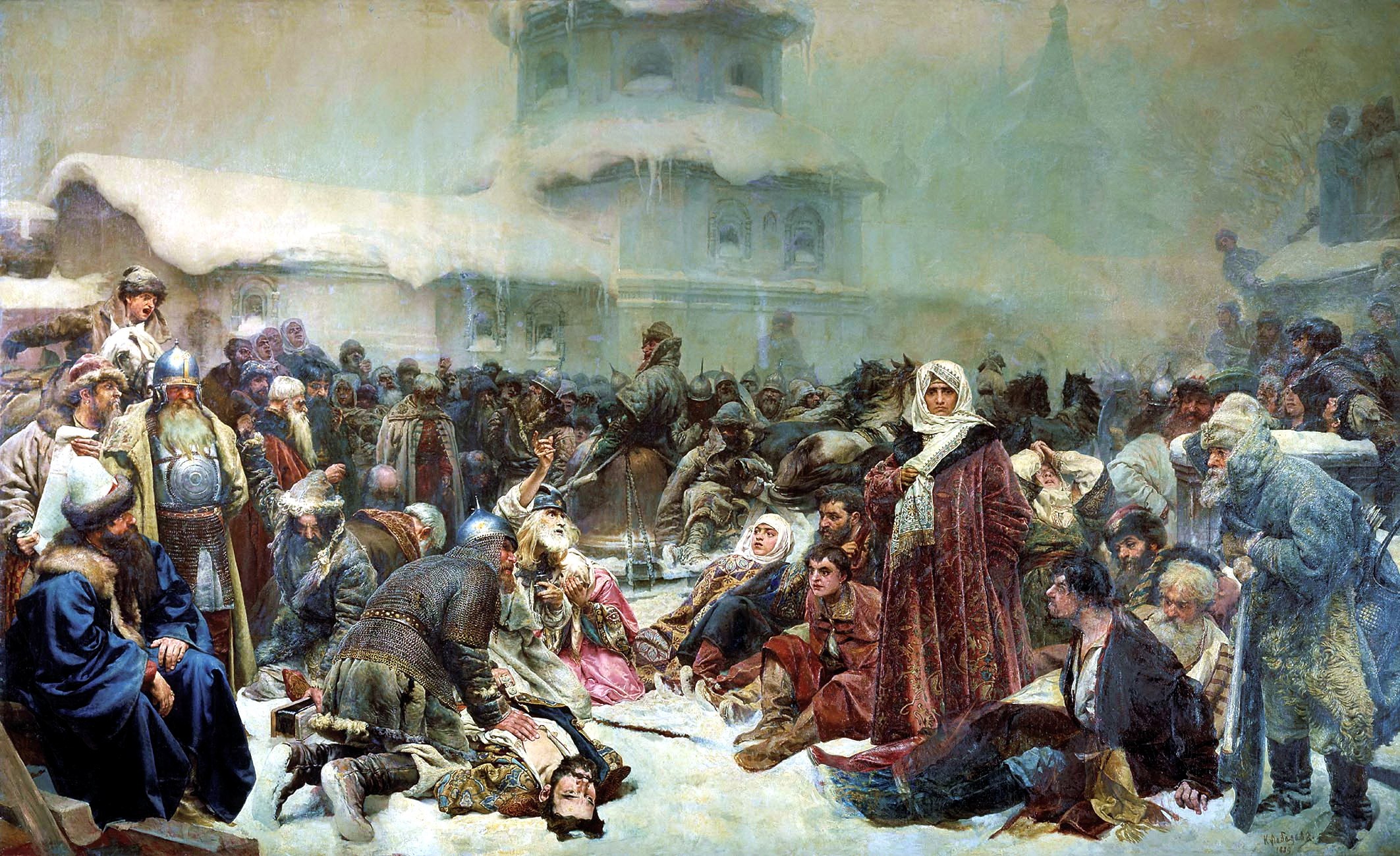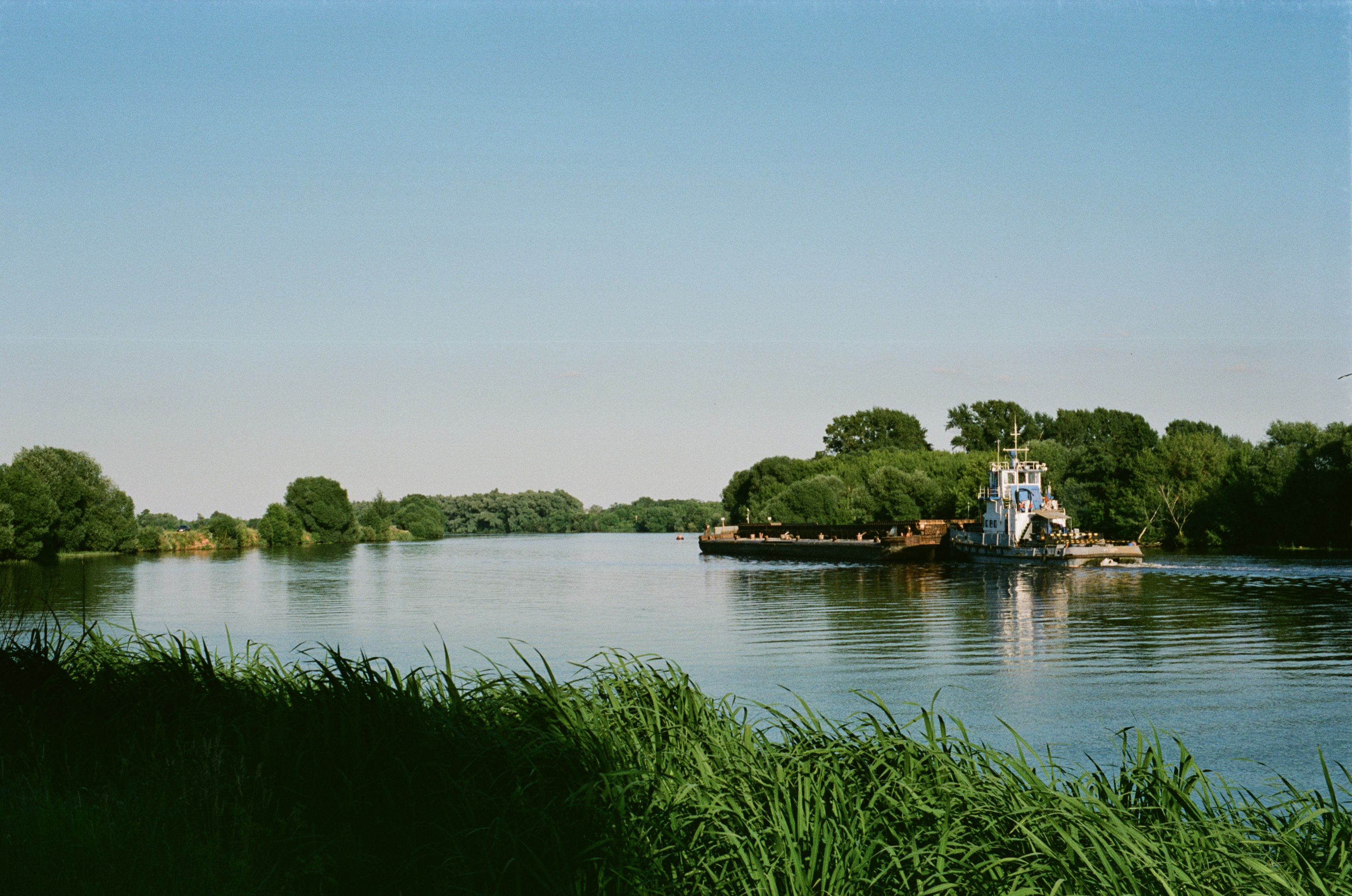|
Kremlin Wall
The Moscow Kremlin Wall is a defensive wall that surrounds the Moscow Kremlin, recognisable by the characteristic notches and its Kremlin towers. The original walls were likely a simple wooden fence with guard towers built in 1156. The Kremlin walls, like many cathedrals in the Kremlin, were built by Italian architects. History One of the most symbolic constructions in Russia's history, the Moscow Kremlin Wall can be traced back to the 12th century when Moscow was founded in 1147. The original outpost was surrounded by the first walls in 1156, built by Yuri Dolgoruki, prince of Suzdal, which were most likely a simple wooden fence with guard towers. Destroyed in 1238 by the Mongol-Tartar invasion, the Moscow Kremlin was rebuilt by the Russian Knyaz Ivan Kalita. In 1339-1340 he erected a bigger fortress on the site of the original outpost which was defended by massive oak walls. Thought to be an impenetrable defence from raids, it was proven to be useless against raids which ... [...More Info...] [...Related Items...] OR: [Wikipedia] [Google] [Baidu] |
Moscow Kremlin From Kamenny Bridge
Moscow is the Capital city, capital and List of cities and towns in Russia by population, largest city of Russia, standing on the Moskva (river), Moskva River in Central Russia. It has a population estimated at over 13 million residents within the city limits, over 19.1 million residents in the urban area, and over 21.5 million residents in Moscow metropolitan area, its metropolitan area. The city covers an area of , while the urban area covers , and the metropolitan area covers over . Moscow is among the world's List of largest cities, largest cities, being the List of European cities by population within city limits, most populous city entirely in Europe, the largest List of urban areas in Europe, urban and List of metropolitan areas in Europe, metropolitan area in Europe, and the largest city by land area on the European continent. First documented in 1147, Moscow became the capital of the Grand Principality of Moscow, which led the unification of the Russian lan ... [...More Info...] [...Related Items...] OR: [Wikipedia] [Google] [Baidu] |
Ivan The Great
Ivan III Vasilyevich (; 22 January 1440 – 27 October 1505), also known as Ivan the Great, was Grand Prince of Moscow and all Russia from 1462 until his death in 1505. Ivan served as the co-ruler and regent for his blind father Vasily II before he officially ascended the throne. He multiplied the territory of his state through conquest, purchase, inheritance and the seizure of lands from his dynastic relatives, and laid the foundations of the centralized Russian state. He also renovated the Moscow Kremlin and introduced a new legal code. Ivan is credited with ending the dominance of the Tatars over Russia; his victory over the Great Horde in 1480 formally restored its independence. Ivan began using the title tsar, and used the title tentatively until the Habsburgs recognized it. While officially using "tsar" in his correspondence with other monarchs, he was satisfied with the title of grand prince at home. Through marriage to Sophia Palaiologina, Ivan made the double-headed ... [...More Info...] [...Related Items...] OR: [Wikipedia] [Google] [Baidu] |
Troitskaya Tower
The Troitskaya Tower (, literally ''Trinity Tower'') is a tower with a through-passage in the center of the northwestern wall of the Moscow Kremlin, which overlooks the Alexander Garden. The Troitskaya Tower was built in 1495–1499 by an Italian architect Aloisio da Milano (known in Russia as Aleviz Fryazin Milanets). The tower has borne several names, including Rizopolozhenskaya, Znamenskaya, and Karetnaya. It received its current name in 1658 from the Troitskaya Coaching Inn (Троицкое подворье) in the Kremlin. The two-story basement of the tower housed a prison in the 16th–17th centuries. There is the Troitsky Bridge, which is protected by the Kutafia Tower and leads to the gates of the Troitskaya Tower. There was also a clock on top of the tower between 1585 and 1812. In 1707, due to a threat of Swedish invasion, the gun slots of the Troitskaya Tower were enlarged to fit heavy cannons. In 1935, the Soviets installed a red star on top of the Troitskaya Tow ... [...More Info...] [...Related Items...] OR: [Wikipedia] [Google] [Baidu] |
Alexander Garden
Alexander Gardens () was one of the first urban public parks in Moscow, Russia. The park comprises three separate gardens, which stretch along all the length of the western Kremlin wall for between the building of the Moscow Manege and the Kremlin. History Until the 18th century, the Neglinnaya River flowed on the site of Alexandrovsky Gardens, over which four bridges were built. Historically, folk festivals were held on the river banks, its water was clean and famous for fishing. After the end of the Napoleonic Wars, Emperor Alexander I decided to take the river underground and enclose it in a pipe three kilometres long. Gardens were laid out in the vacated place, designed by the architect Osip Bove as part of a plan to restore Moscow after the fire of 1812. The gardens were built from 1819 to 1823 and were originally called the Kremlin Gardens. After the coronation of Alexander II in 1856, the gardens were renamed the Alexander Gardens. Layout Upper Garden Towards t ... [...More Info...] [...Related Items...] OR: [Wikipedia] [Google] [Baidu] |
Neglinnaya River
The Neglinnaya ( rus, Неглинная, p=nʲɪˈɡlʲinːəjə), also known as Neglinka, Neglinna, Neglimna (Неглинка, Неглинна, Неглимна), is a 7.5 km underground river in the central part of Moscow and a tributary of the river Moskva. It flows in the tunnels under Samotechnaya Street, Tsvetnoy Boulevard, Neglinnaya Street and Alexander Garden and Zaryadye. The Neglinnaya discharges into the Moskva through two separate tunnels near Bolshoy Kamenny Bridge and Bolshoy Moskvoretsky Bridge. History The river in its natural state used to flow openly from the northern parts of Moscow to the south across the very centre of the city. The Kremlin was built on a hill east of the Neglinnaya, using the river as a moat. The moat did not stop foreign invasions but slowed development of territories west of the Kremlin; initially, the city grew eastward, into Red Square and Kitay-gorod. When Muscovites began settling on the western side, territories arou ... [...More Info...] [...Related Items...] OR: [Wikipedia] [Google] [Baidu] |
Red Square
Red Square ( rus, Красная площадь, Krasnaya ploshchad', p=ˈkrasnəjə ˈploɕːɪtʲ) is one of the oldest and largest town square, squares in Moscow, Russia. It is located in Moscow's historic centre, along the eastern walls of the Moscow Kremlin, Kremlin. It is the city's most prominent landmark, with famous buildings such as Saint Basil's Cathedral, Lenin's Mausoleum and the GUM (department store), GUM department store. It has been a UNESCO World Heritage Site since 1990. Red Square has been the scene of executions, demonstrations, riots, parades, and speeches. Almost 73,000 square metres (800,000 square feet), it lies directly east of the Kremlin and north of the Moskva River. A moat that separated the square from the Kremlin was paved over in 1812. Location Red Square has an almost rectangular shape and is 70 meters wide and 330 meters long. It extends lengthways from northwest to southeast along part of the wall of the Kremlin that forms its boundary on ... [...More Info...] [...Related Items...] OR: [Wikipedia] [Google] [Baidu] |
Moskva River
The Moskva (, ''Moskva-reka'') is a river that flows through western Russia. It rises about west of Moscow and flows roughly east through the Smolensk and Moscow Oblasts, passing through central Moscow. About southeast of Moscow, at the city of Kolomna, it flows into the Oka, itself a tributary of the Volga, which ultimately flows into the Caspian Sea. History According to recent studies, the current riverbed of the Moskva River was occupied about 12 thousand years ago. In addition to Finnic tribes, the Moskva River is also the origin of Slavic tribes such as the Vyatichi tribe. Etymology The name of the city is thought to be derived from the name of the river. Several theories of the origin of the name have been proposed. The most linguistically well-grounded and widely accepted is from the Proto-Balto-Slavic root *''mŭzg''-/''muzg''- from the Proto-Indo-European "wet", so the name ''Moskva'' might signify a river at a wetland or a marsh. Its cognates include , ... [...More Info...] [...Related Items...] OR: [Wikipedia] [Google] [Baidu] |
Moskva River In Winter, Moscow, Russia
Moscow is the Capital city, capital and List of cities and towns in Russia by population, largest city of Russia, standing on the Moskva (river), Moskva River in Central Russia. It has a population estimated at over 13 million residents within the city limits, over 19.1 million residents in the urban area, and over 21.5 million residents in Moscow metropolitan area, its metropolitan area. The city covers an area of , while the urban area covers , and the metropolitan area covers over . Moscow is among the world's List of largest cities, largest cities, being the List of European cities by population within city limits, most populous city entirely in Europe, the largest List of urban areas in Europe, urban and List of metropolitan areas in Europe, metropolitan area in Europe, and the largest city by land area on the European continent. First documented in 1147, Moscow became the capital of the Grand Principality of Moscow, which led the unification of the Russian lan ... [...More Info...] [...Related Items...] OR: [Wikipedia] [Google] [Baidu] |
Soviet Union
The Union of Soviet Socialist Republics. (USSR), commonly known as the Soviet Union, was a List of former transcontinental countries#Since 1700, transcontinental country that spanned much of Eurasia from 1922 until Dissolution of the Soviet Union, it dissolved in 1991. During its existence, it was the list of countries and dependencies by area, largest country by area, extending across Time in Russia, eleven time zones and sharing Geography of the Soviet Union#Borders and neighbors, borders with twelve countries, and the List of countries and dependencies by population, third-most populous country. An overall successor to the Russian Empire, it was nominally organized as a federal union of Republics of the Soviet Union, national republics, the largest and most populous of which was the Russian SFSR. In practice, Government of the Soviet Union, its government and Economy of the Soviet Union, economy were Soviet-type economic planning, highly centralized. As a one-party state go ... [...More Info...] [...Related Items...] OR: [Wikipedia] [Google] [Baidu] |
Alexander I Of Russia
Alexander I (, ; – ), nicknamed "the Blessed", was Emperor of Russia from 1801, the first king of Congress Poland from 1815, and the grand duke of Finland from 1809 to his death in 1825. He ruled Russian Empire, Russia during the chaotic period of the Napoleonic Wars. The eldest son of Emperor Paul I and Sophie Dorothea of Württemberg, Alexander succeeded to the throne after his father was murdered. As prince and during the early years of his reign, he often used liberal rhetoric but continued Russian absolutism, Russia's absolutist policies in practice. In the first years of his reign, he initiated some minor social reforms and (in 1803–04) major liberal educational reforms, such as building more universities. Alexander appointed Mikhail Speransky, the son of a village priest, as one of his closest advisors. The over-centralized Collegium (ministry), Collegium ministries were abolished and replaced by the Committee of Ministers of the Russian Empire, Committee of Ministers ... [...More Info...] [...Related Items...] OR: [Wikipedia] [Google] [Baidu] |
Elizabeth Of Russia
Elizabeth or Elizaveta Petrovna (; ) was Empress of Russia from 1741 until her death in 1762. She remains one of the most popular List of Russian rulers, Russian monarchs because of her decision not to execute a single person during her reign, her numerous construction projects, and her strong opposition to Prussian policies. She was the last person on the agnatic line of the Romanovs as Peter III of Russia, her nephew ascended, thus creating the house of Holstein-Gottorp-Romanov. The second-eldest daughter of Tsar Peter the Great (), Elizabeth lived through the confused successions of her father's descendants following her half-brother Alexei Petrovich, Tsarevich of Russia, Alexei's death in 1718. The throne first passed to her mother Catherine I of Russia (), then to her nephew Peter II of Russia, Peter II, who died in 1730 and was succeeded by Elizabeth's first cousin Anna of Russia, Anna (). After the brief rule of Anna's infant great-nephew, Ivan VI of Russia, Ivan VI, Eliz ... [...More Info...] [...Related Items...] OR: [Wikipedia] [Google] [Baidu] |
Alexis Of Russia
Alexei Mikhailovich (, ; – ), also known as Alexis, was Tsar of all Russia from 1645 until his death in 1676. He was the second Russian tsar from the House of Romanov. He was the first tsar to sign laws on his own authority and his council passed the ''Sobornoye Ulozheniye'' of 1649, which strengthened the bonds between autocracy and the lower nobility. In religious matters, he sided closely with Patriarch Nikon of Moscow, Patriarch Nikon during the Schism of the Russian Church, schism in the Russian Orthodox Church which saw unpopular liturgical reforms. While finding success in foreign affairs, his reign saw several wars with Russo-Persian War (1651–1653), Iran, Russo-Polish War (1654–1667), Poland (from whom left-bank Ukraine and Smolensk Voivodeship, Smolensk were annexed) and Russo-Swedish War (1656–1658), Sweden, as well as internal instabilities such as the Salt Riot in Moscow and the Cossack revolt of Stenka Razin in southern Russia. At the time of his death, R ... [...More Info...] [...Related Items...] OR: [Wikipedia] [Google] [Baidu] |








